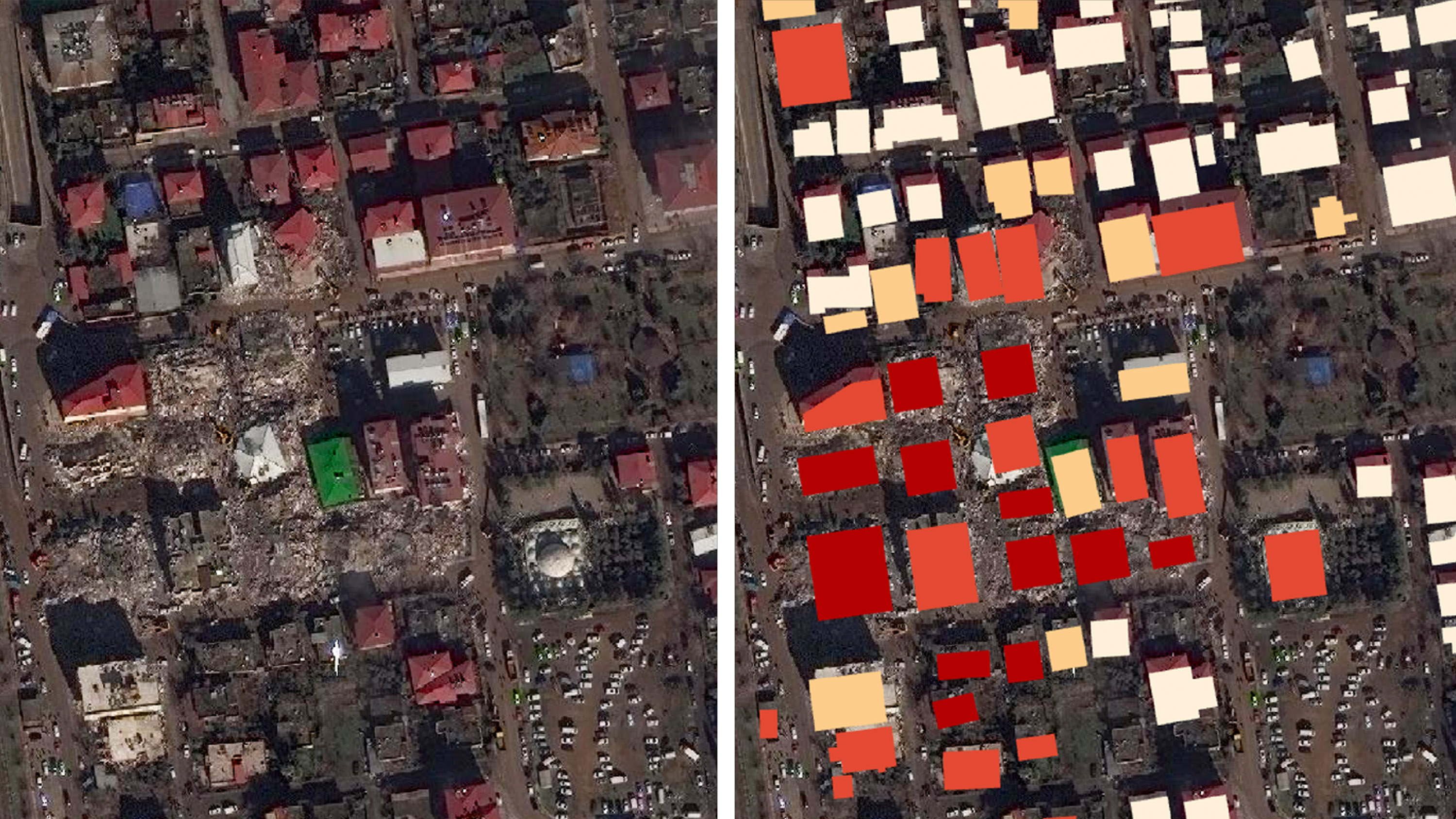AI enhances disaster response by speeding up recovery and saving lives through rapid data analysis and efficient resource allocation. Disasters strike without warning, leaving devastation in their wake.
Quick and effective response is crucial for minimizing damage and saving lives. AI plays a pivotal role in disaster management by analyzing vast amounts of data swiftly. This helps responders make informed decisions faster. AI-powered tools can predict disaster patterns, identify high-risk areas, and allocate resources efficiently.
Machine learning algorithms improve over time, enhancing their accuracy in predicting and responding to future disasters. With AI, emergency teams can streamline operations, coordinate better, and ultimately save more lives. The integration of AI in disaster response is revolutionizing the way we handle emergencies, making our world safer.
The Role Of Ai In Modern Disaster Response
Artificial Intelligence (AI) is revolutionizing disaster response. It speeds up recovery and saves lives. AI can predict disasters and help rescue teams. Let’s explore how AI helps in modern disaster response.
How Ai Transforms Early Warning Systems
AI enhances early warning systems. It can predict earthquakes, hurricanes, and floods. This helps people prepare and evacuate early. AI analyzes weather patterns and geological data.
- AI uses satellite images
- AI processes real-time data
- AI sends alerts faster
AI-powered systems are more accurate. They minimize false alarms. This saves time and resources.
Improving Rescue Operations With Real-time Data
AI improves rescue operations. It provides real-time data to rescue teams. This helps them make quick decisions.
| Feature | Benefit |
|---|---|
| Real-time mapping | Shows safe routes |
| Drone surveillance | Locates survivors |
| AI chatbots | Communicates with victims |
Rescue teams use AI to coordinate better. They can share information instantly. This speeds up rescue efforts.

Case Studies: Ai Success Stories In Disaster Management
AI has revolutionized disaster management. It saves lives and speeds up recovery. Let’s explore some success stories.
Earthquake Response: Ai For Faster Detection And Aid Dispatch
Earthquakes are sudden and deadly. AI helps detect them quickly. Early detection means faster aid dispatch.
In Japan, AI algorithms analyze seismic data. They predict the earthquake’s impact. This allows quick response and saves lives.
AI also helps in planning rescue missions. It identifies the most affected areas. Drones equipped with AI locate survivors. This technology speeds up rescue operations.
Flood Management: Predictive Analytics For Pre-emptive Action
Floods can be catastrophic. AI’s predictive analytics helps in taking pre-emptive actions. It analyzes weather patterns and predicts floods.
In India, AI systems monitor rainfall data. They alert authorities before floods occur. This allows timely evacuations and reduces damage.
AI also helps in resource allocation. It identifies high-risk areas. Authorities can prioritize these areas for relief operations.
AI Technologies Used
| Technology | Application |
|---|---|
| Machine Learning | Seismic data analysis and flood prediction |
| Drone Technology | Locating survivors in disaster zones |
| Predictive Analytics | Forecasting weather patterns and floods |
Key Benefits
- Faster Detection: Early warning systems save lives.
- Efficient Aid Dispatch: Quick response reduces casualties.
- Pre-Emptive Actions: Predictive analytics prevent major damage.
Technological Innovations Behind Ai In Disaster Relief
Disaster response has transformed with the help of AI technologies. These innovations have accelerated recovery and saved countless lives. Let’s explore the key advancements.
Machine Learning Models For Predictive Analysis
Machine learning models analyze vast amounts of data. They predict natural disasters like earthquakes and floods with high accuracy. These predictions help in early warnings and better preparedness.
Here are some key features of machine learning models:
- Analyze historical data
- Identify patterns
- Predict future events
These models use data from:
- Weather stations
- Seismic sensors
- Satellite images
Predictive analysis can provide a significant head start in disaster management. It helps in evacuating people and mobilizing resources efficiently.
Drones And Robotics: Eyes And Hands In Hazardous Environments
Drones and robotics play a crucial role in disaster relief. They access areas that are unsafe for humans. Drones provide real-time aerial views of affected regions.
Here is how drones and robotics assist:
| Technology | Function |
|---|---|
| Drones | Survey disaster zones |
| Robotics | Perform search and rescue |
Robots can enter collapsed buildings and search for survivors. They also deliver supplies to stranded victims.
These technologies reduce the risk to human rescuers. They speed up the rescue operations and save many lives.

Challenges And Limitations Of Ai In Disaster Scenarios
AI helps in disaster response, but it’s not perfect. Challenges exist in data privacy, ethical concerns, and adaptability to complex situations. These issues can slow down recovery efforts.
Data Privacy And Ethical Concerns
Using AI involves data collection. This data includes sensitive information about people. Ensuring data privacy is crucial. Misuse of data can lead to ethical issues.
AI systems can sometimes make biased decisions. This happens due to the data they are trained on. Ethical guidelines are needed to avoid harm.
The Complexity Of Natural Disasters: Ai’s Adaptability Question
Natural disasters are unpredictable. Each disaster has unique challenges. AI systems may not adapt quickly enough. This limits their effectiveness in real-time scenarios.
AI requires constant updates to stay relevant. This can be resource-intensive. In some cases, human intervention is still necessary.
| Challenge | Impact |
|---|---|
| Data Privacy | Risk of misuse of sensitive information |
| Ethical Concerns | Possibility of biased decisions |
| Adaptability | Difficulty in adjusting to unique situations |
- AI helps but has limitations.
- Data privacy and ethics are major concerns.
- Adapting to new disasters is challenging for AI.
- Ensure data privacy in AI systems.
- Follow ethical guidelines to avoid bias.
- Update AI systems regularly for better adaptability.
Collaborative Efforts: Ai And Human Expertise
Disaster response is a critical task. Combining AI with human expertise can transform the efficiency of such efforts. Together, they can speed up recovery and save lives. The integration of AI tools with local knowledge brings precision and speed to emergency responses.
Integrating Ai With Local Knowledge For Effective Response
Local knowledge is crucial during disasters. AI can analyze vast amounts of data quickly. This combination can lead to faster and more accurate decision-making.
| AI Capabilities | Local Expertise |
|---|---|
| Data analysis | Understanding terrain |
| Predictive modeling | Knowledge of local resources |
| Real-time monitoring | Community relationships |
AI can provide real-time data during a disaster. Local experts can use this data to make informed decisions. For example, AI can predict flood patterns. Local responders can then plan evacuations effectively.
Training Programs For Emergency Responders On Ai Tools
Emergency responders need to understand AI tools. Training programs are essential for this. Proper training ensures effective use of AI in disaster response.
- Basic understanding of AI tools
- Hands-on training sessions
- Regular updates on AI advancements
These programs can include simulations of disaster scenarios. Responders can practice using AI tools in these simulations. This helps them to be prepared for real-life situations.
Training also builds trust in AI systems. Responders will feel confident using AI tools during emergencies. This collaborative approach can save many lives.

Future Directions: Expanding The Scope Of Ai In Disaster Relief
Artificial Intelligence (AI) is reshaping disaster response. The future holds promising advancements. These advancements can speed up recovery and save many lives. AI will become more integrated in disaster relief operations.
Innovative Research Areas In Ai For Enhanced Disaster Response
Scientists are exploring new AI research areas. These areas aim to enhance disaster response. Here are some key research areas:
- Predictive Analytics: Using AI to predict natural disasters.
- Real-time Data Processing: Analyzing data quickly during emergencies.
- Robotics: Deploying AI-powered robots for search and rescue.
- Image Recognition: Identifying damage from satellite images.
- Natural Language Processing: Understanding and responding to emergency calls.
Research in these areas can greatly improve disaster response efforts. AI technologies will become more efficient and reliable.
Global Partnerships For Sharing Ai Technologies And Best Practices
Collaboration is key to advancing AI in disaster relief. Global partnerships can help share AI technologies and best practices. This ensures better disaster management worldwide.
| Partnership Type | Benefits |
|---|---|
| Government Collaboration | Sharing resources and expertise. |
| Academic Partnerships | Conducting joint research projects. |
| Private Sector Involvement | Developing innovative AI solutions. |
| NGO Cooperation | Implementing AI in field operations. |
By fostering these partnerships, we can harness the full potential of AI in disaster response. This will lead to faster recovery and more lives saved.
Case Study: Ai’s Role In The Covid-19 Pandemic Response
The COVID-19 pandemic presented an unprecedented global crisis. The healthcare system faced immense pressure. Artificial Intelligence (AI) emerged as a powerful tool during this time. AI helped track the spread of the virus. It also managed healthcare resources efficiently.
Tracking The Spread With Ai Algorithms
AI algorithms played a crucial role in tracking the virus. These algorithms analyzed data from various sources. They included social media, news reports, and healthcare records. AI-driven models predicted the spread of the virus. This helped in implementing timely lockdowns and restrictions.
AI tools also identified hotspots. Authorities could then focus their resources effectively. Tracking the virus with AI reduced the spread. It saved countless lives.
| Data Source | Role in Tracking |
|---|---|
| Social Media | Identified early warning signs and public sentiment |
| News Reports | Provided real-time updates and outbreak locations |
| Healthcare Records | Offered detailed information on infection rates |
Ai In Managing Healthcare Resources During The Crisis
AI helped manage healthcare resources effectively. Hospitals faced shortages of beds and ventilators. AI-driven systems optimized resource allocation.
AI analyzed patient data to prioritize treatments. It identified patients needing urgent care. This ensured the best use of available resources.
- AI predicted the need for medical supplies.
- It ensured timely procurement and distribution.
- It helped avoid critical shortages.
AI also assisted in vaccine distribution. It optimized the supply chain. This ensured vaccines reached the right places at the right time.
In essence, AI played a vital role during the COVID-19 pandemic. It tracked the virus and managed healthcare resources effectively. This showcased the transformative power of AI in disaster response.
Making Ai Accessible For Disaster Response
Artificial intelligence (AI) has revolutionized disaster response. Yet, making it accessible is crucial. AI can speed up recovery and save lives, but only if widely available. This section explores how AI tools and education can help vulnerable regions.
Open Source Ai Tools For Disaster Management
Open source AI tools are vital for disaster response. These tools are free and can be customized. They help in predicting disasters, analyzing damage, and coordinating relief efforts.
Here are some popular open source AI tools:
- TensorFlow: This tool helps in building predictive models.
- QGIS: Useful for mapping disaster-affected areas.
- Ushahidi: A platform for gathering and mapping crisis information.
Using open source tools ensures cost-effectiveness. They allow communities to adapt AI solutions to their specific needs.
Capacity Building In Vulnerable Regions Through Ai Education
Building AI capacity in vulnerable regions is essential. Education can empower locals to use AI effectively. Training programs should focus on practical applications.
Key areas for AI education include:
- Data Collection: Teaching how to gather and manage data.
- Model Building: Training on creating predictive models.
- Tool Utilization: How to use AI tools like TensorFlow and QGIS.
Educational initiatives can include workshops, online courses, and community projects. Collaboration with local universities and NGOs can enhance these efforts.
Here’s an example table of potential AI training programs:
| Program | Duration | Focus |
|---|---|---|
| Basic AI Training | 1 Month | Introduction to AI and data collection |
| Advanced AI Modeling | 3 Months | Building and deploying AI models |
| AI Tool Workshops | 1 Week | Hands-on training with specific tools |
Empowering locals with AI knowledge can transform disaster response. It ensures a faster, more effective recovery process.
Frequently Asked Questions
How Is Ai Used In Disaster Recovery?
AI aids disaster recovery by predicting events, optimizing resource allocation, and analyzing damage. It speeds up response times and improves communication.
How Is Ai Used In Emergency Response?
AI enhances emergency response by predicting disasters, optimizing resource allocation, and providing real-time data analysis. It helps in swift decision-making, improving overall efficiency and effectiveness during crises.
How Is Ai Used In Natural Disaster Prediction And Management?
AI predicts natural disasters by analyzing patterns in weather data. It improves early warning systems, aiding evacuation plans. AI algorithms also assist in real-time damage assessment and resource allocation, enhancing disaster response and management.
How Can Robots Help With Rescuing People In Natural Disasters?
Robots assist in natural disasters by locating survivors, delivering supplies, and assessing damage. They navigate dangerous areas safely and efficiently.
Conclusion
AI in disaster response transforms recovery efforts and saves lives. It enhances speed, accuracy, and efficiency. Implementing AI-driven solutions can significantly reduce response times. This leads to better outcomes for affected communities. Embrace AI technology to bolster disaster management strategies and protect lives.
The future of disaster response is undoubtedly AI-powered.





